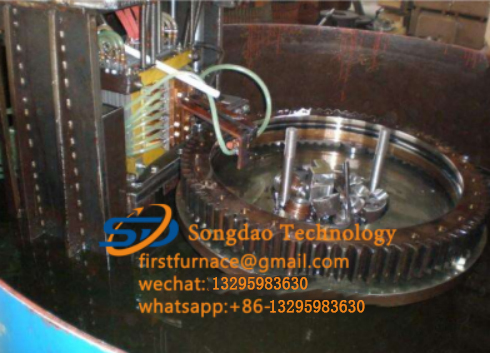- 16
- Mar
How is the induction melting furnace cast?
How is the induction melting furnace cast?
The copper casting process is generally divided into: sanding copper, precision casting copper, die-casting copper, forging copper, etc.
1. Make molds and wax molds with planning drawings.
2. The wax mold is formed, and the inspection is qualified (fonts, patterns, patterns).
3. According to the appropriate size of the wax mold, it is organized into a bunch of trees.
4. Make useful and detailed brushing of the wax mold of the assembled tree (use a small brush to fill in the fonts and patterns)
5. Equip the mortar with finer sand, and put the wax mold into the slurry bucket to evenly soak the surface of the wax mold. Lubricating and delicate mortar is an important part of ensuring the surface lubrication of copper castings. Such repeated immersion of fine sand and coarse sand in multiple layers is the fixation of the model. A small number of coagulation raw materials are required to be added to the sand, and it cannot be too much. The importance of the shell mold lies in its tightness. Once it is cracked during casting, the process from wax injection to the manufacture of the shell mold will be complete.
6. Put the shell with the wax mold inside the whole channel soaked into the roasting furnace and put it upside down, turn the pouring port down, and then roast it. Slowly heat up, so that the wax mold gradually melts, so that it flows out of the casting hole. This part is not only to melt the wax mold out of the shell, but also needs to bond the shell mold sand together to increase the hardness and strength of the shell mold. According to the degree of the shell mold and the thickness of the shell shape, grasp the time and temperature of the roasting.
7. There is no clear quantitative specification for the formula of copper water. First put the copper material into the smelting crucible, and the amount put in depends on the weight of the casting. In the process of copper melting, according to the color of the flame (the temperature reaches about 1300 ℃) and the degree of melting of the copper water, gradually according to the experience (not quantified), the proportion of zinc, tin, iron, lead and other metals is added to achieve the hardness effect of the workpiece.
- Put the baked shell mold into the sand and bury it to half the height, because the sand can fix the shell mold, so that the rapid temperature difference between the shell mold and the outside can be avoided during the casting process, and it has a good thermal insulation effect. The casting needs to be completed at one time and cannot be stopped halfway or replenished. In order to prevent the separation of the bonding parts, even the same copper water will have an influence due to the degree of connection injected during casting. One is that the castings are simply layered and not tight; the other is that the fine parts are cooled first, which affects the fluidity of the casting and forms a casting dead angle; the third is the cracking of the shell mold caused by the temperature difference.

